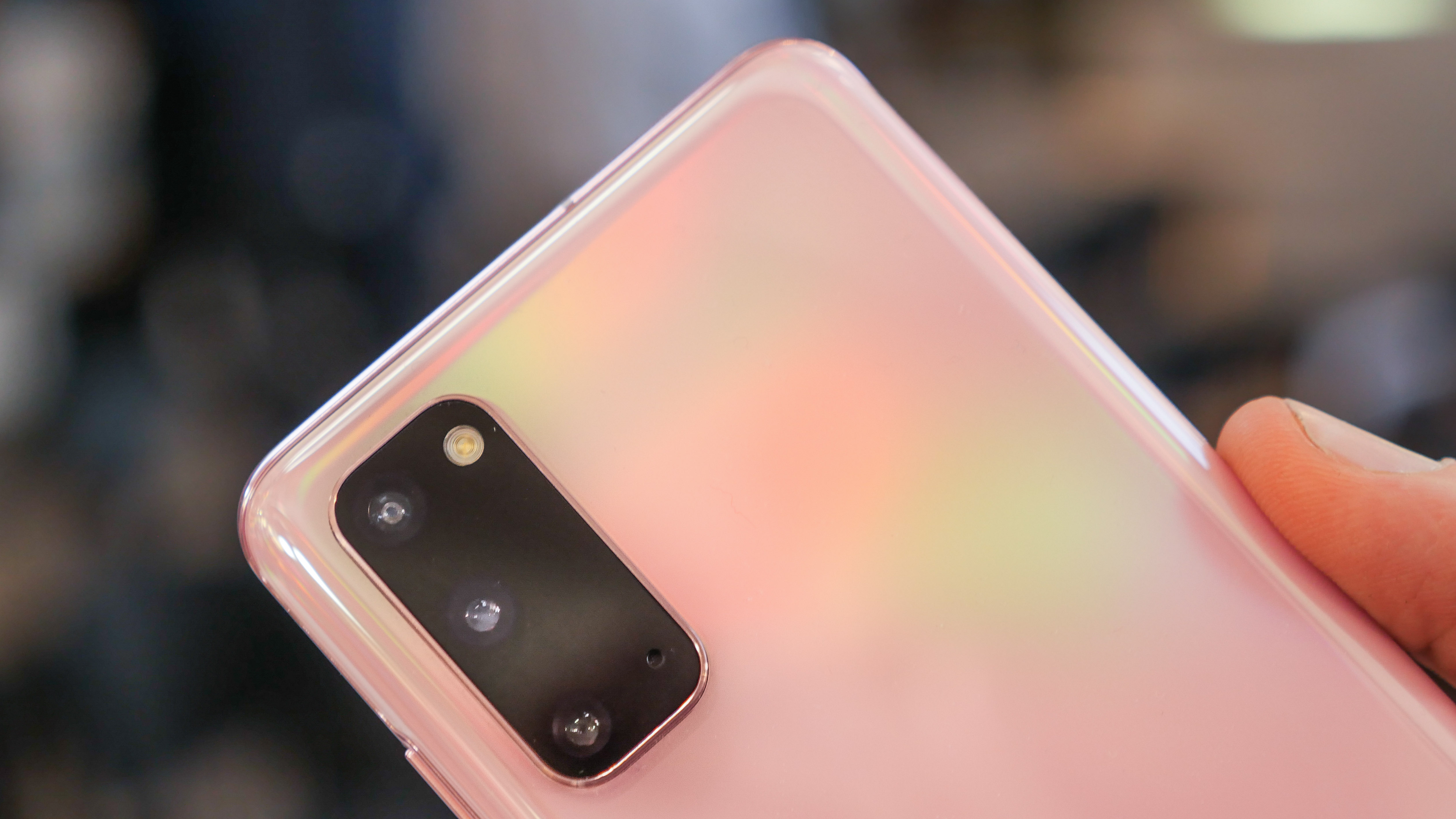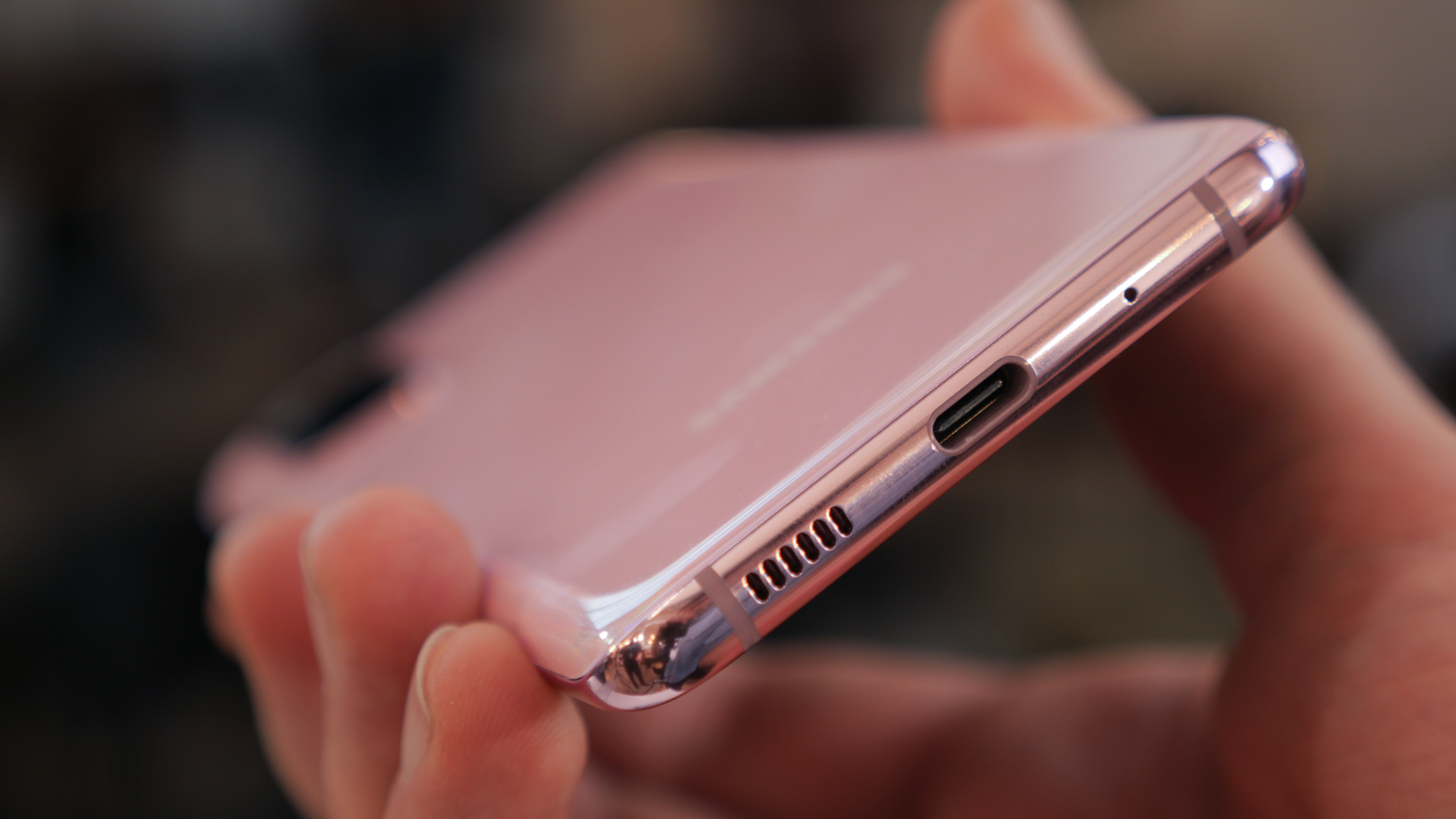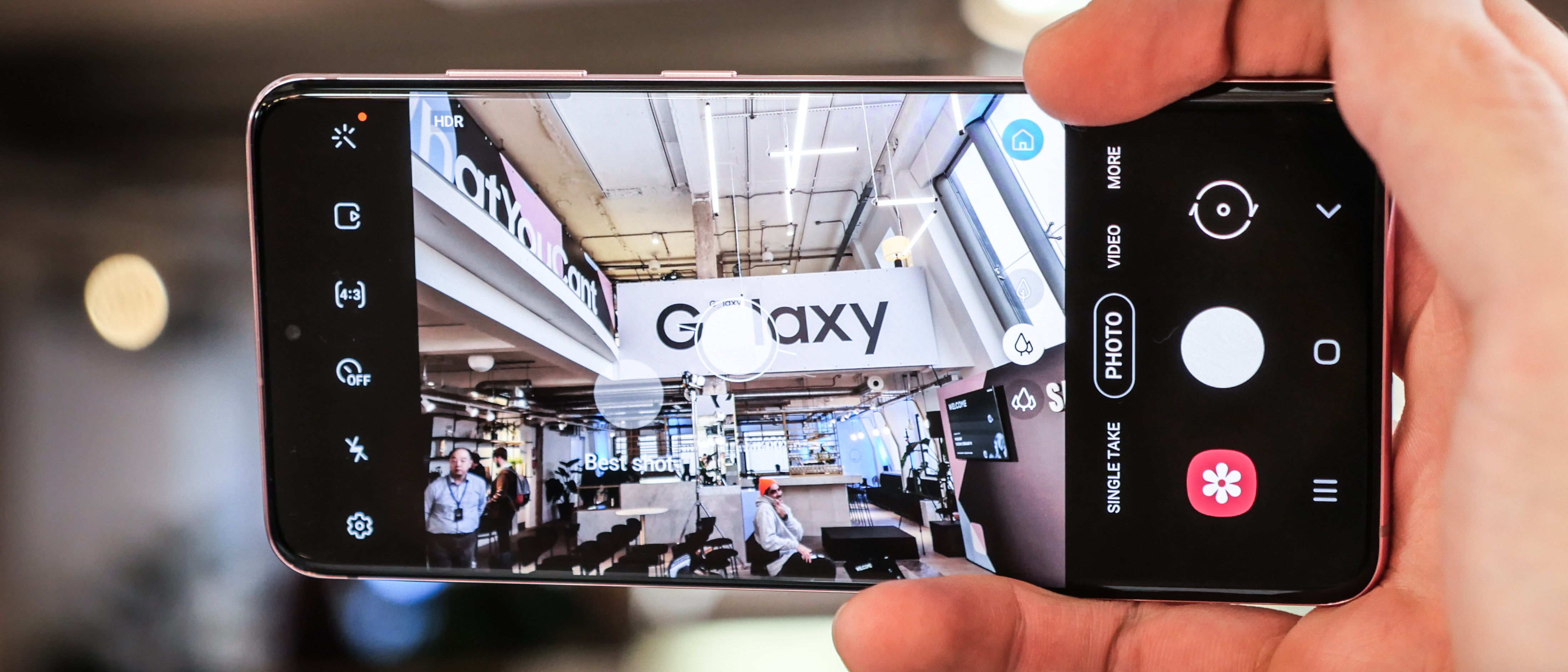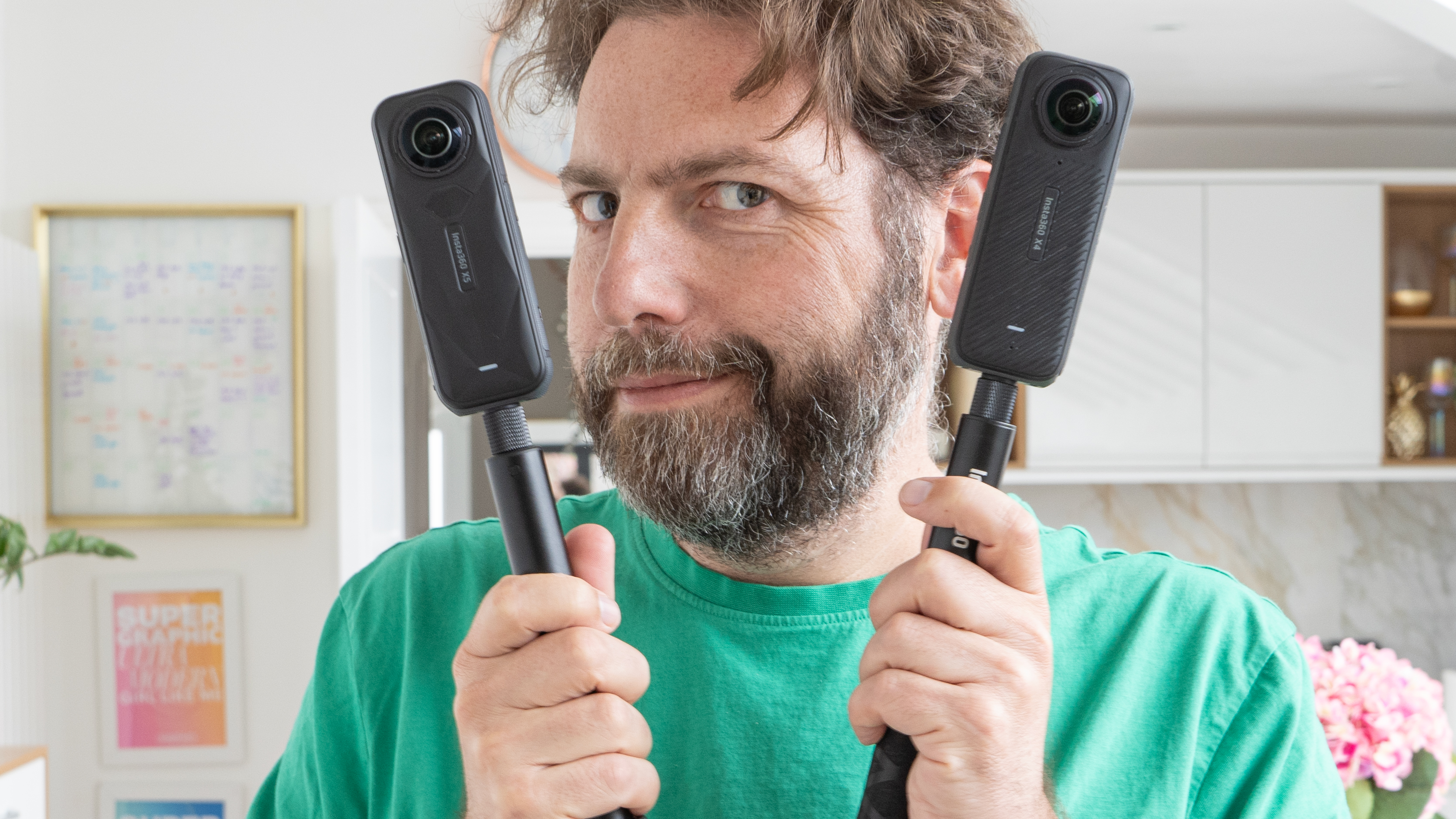Early Verdict
Samsung’s entry-level Galaxy S20 is a familiar-looking phone. While its design improvements feel incremental though, the camera system has totally changed - with Samsung dropping its dual aperture lens, bumping up the telephoto resolution to an eye-watering 64MP and adding 8K video to the mix. The phone has some neat party tricks too, including 33MP stills capture while shooting 8K video and a manual video mode, so while it’s premature to call it, we’re optimistic that the S20 will be at the very least, a good camera phone.
Pros
- +
Competitive 3x optical zoom
- +
Smooth, sharp, punchy screen
Cons
- -
Very familiar design
- -
No headphone jack
Why you can trust Digital Camera World
The Samsung Galaxy S20 is a 6.2-inch screened smartphone, making it the proverbial baby of the S20 bunch. Weighing 163g, it’s beautifully light, especially when compared to the 194g iPhone 11, and the 188g iPhone 11 Pro. Samsung hasn’t dared to be bold with its S20’s design though – it looks very Samsung, and very 2019/20, but just not very imaginative – other than the fact that is 5G ready (with a 4G version available in some countries, too).
That said, the camera system has been totally overhauled, with Samsung ditching its dual-aperture main module in favor of an f/1.8, 12MP camera across both the S20 and Galaxy S20 Plus. Where’s the 108MP sensor rumored far and wide? That’s in the Galaxy S20 Ultra. Sure, that’s the showstopper device – but to find out more about what will likely end up being the most popular S20 phone, read on.
Samsung Galaxy S20 camera

The Samsung Galaxy S20’s camera consists of a main 12MP sensor with huge (for a smartphone) 1.8μm pixels, combined with an f/1.8 aperture lens packing OIS. By ditching the dual f/1.5 and f/2.4 lens found on the S9 and S10, Samsung has gone for a more traditional setup, as found on the Pixel 4 and iPhone 11 Pro – two phones that outperform the S10 in our best camera phones roundup, especially in low light.
While there’s no 108MP sensor here, Samsung has used the 64MP module found in the Realme X2 Pro on its S20 and S20 Plus, powering that 3x telephoto zoom. Naturally, with that kind of resolution, you get smaller 0.8μm pixels, though thankfully, Samsung has loaded the module’s lens with OIS as well. There’s no time of flight sensor on the vanilla S20, so the final camera is the ultra-wide 120-degree 12MP module with an f/2.2 lens and 1.2μm pixels.
While this triple camera setup is very standard on smartphones today, albeit, with lower resolutions on the telephoto camera, the S20 can do some very cool stuff. First up is 8K video. This shoots at 30fps, and while it might seem utterly bizarre and pointless to most, Samsung’s figured out how to make it make sense. While you’re capturing 8K video, hit the photo shutter release button and you’ll simultaneously capture 33MP stills. That means if you can decide between video and high-quality stills, you can capture both.
If the footage is being recorded at native 8K, it’s captured using the 64MP telephoto camera, which is how it’s able to capture 33MP stills, resulting in a significant zoom when shooting at sky-high resolutions. This probably means poorer low light performance, given the telephoto module’s lower aperture, but we’ll have to wait and see on that front. Additionally, there’s also a new super steady video mode which gives all the S20s action camera stabilization, not to mention a manual video mode - finally.
• Hands on: Samsung Galaxy S20 Plus
• Samsung Galaxy S20 Ultra review
Samsung Galaxy S20: design
While the S20’s design isn’t particularly standout to look at, that isn’t to say its badly built. On the contrary, the combination of Gorilla Glass 6 and 7003-series aluminum, complete with IP68 water and dust resistance make it feel like a true flagship in the hand.
Unlike more striking devices like the Huawei Mate 30 Pro, however, there aren’t any design flourishes around the back and the rectangular camera bump just looks a bit, well, boring. Additionally, its screen is much less curved than that of older Samsung flagships which is an interesting move, making it all feel that bit less edge-to-edge.
That said, its screen is a beauty, thanks to its pin-sharp 3200 x 1440 resolution and Dynamic AMOLED quality. Sharper than any iPhone, it’s also smoother with a 120Hz refresh rate, and trademark AMOLED pop, interrupted only by a punch-hole camera in the top center.
Samsung Galaxy S20: additional specs

Additional specs include 128GB storage that can be boosted by 1TB with a microSD card, 8GB RAM in the 4G version and 12GB in the pricier 5G S20, and an Exynos 990 powering the experience. As for the phone’s battery, it’s been bumped up to 4000mAh, and charges up at a fast, but not class-leading 25W.
The S20 also carries forward the Dolby tuned stereo speakers of the S10, in addition to an under-display fingerprint scanner and IP68 water and dust resistance. Running Android complete with Samsung’s custom UI over the top - One UI 2, while it isn’t stock, you get full access to the Google Play Store as well as some neat new features, like Samsung’s answer to AirDrop, Quick Share.
Samsung Galaxy S20: early verdict
The Galaxy S20 looks set to be a safe bet if the specs are anything to go by. Its screen is the centerpiece with its 120Hz refresh rate, and the fact it’s light and pocketable is also a boon.
We’re looking forward to test out the new 64MP telephoto camera; this is the first time we’ve seen the module paired with either a telephoto lens, or OIS. Additionally, Samsung’s new main 12MP camera has stiff competition from Apple and Google. While it hasn’t managed to better them in the past, perhaps the S20 is the smartphone to do it? Watch this space, we’ll be getting one in for review in the coming weeks.
Read more
• Smartphone news, camera phone leaks and mobile rumors
• Best budget camera phone in 2020
• The best camera phone in 2020
• The best add-on lenses for iPhone and Android phones
• The best gimbals for your iPhone, GoPro and camera
• The best selfie sticks
Basil Kronfli is a freelance technology journalist, consultant, and content creator. He trained in graphic design and started his career at Canon Europe before moving into journalism. Basil is also experienced in video production, independently running the YouTube channel TechEdit, and during his time at Future, he worked alongside the Digital Camera World team as a senior video producer.


